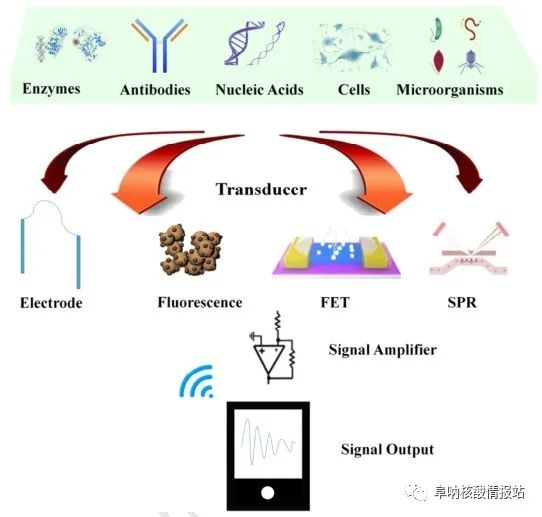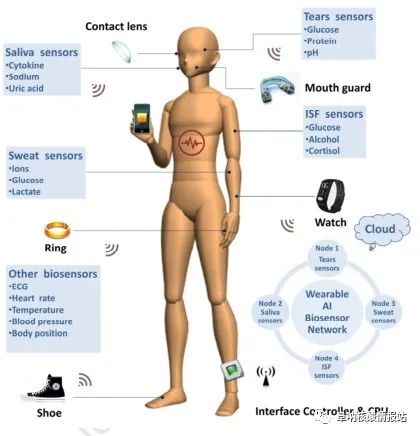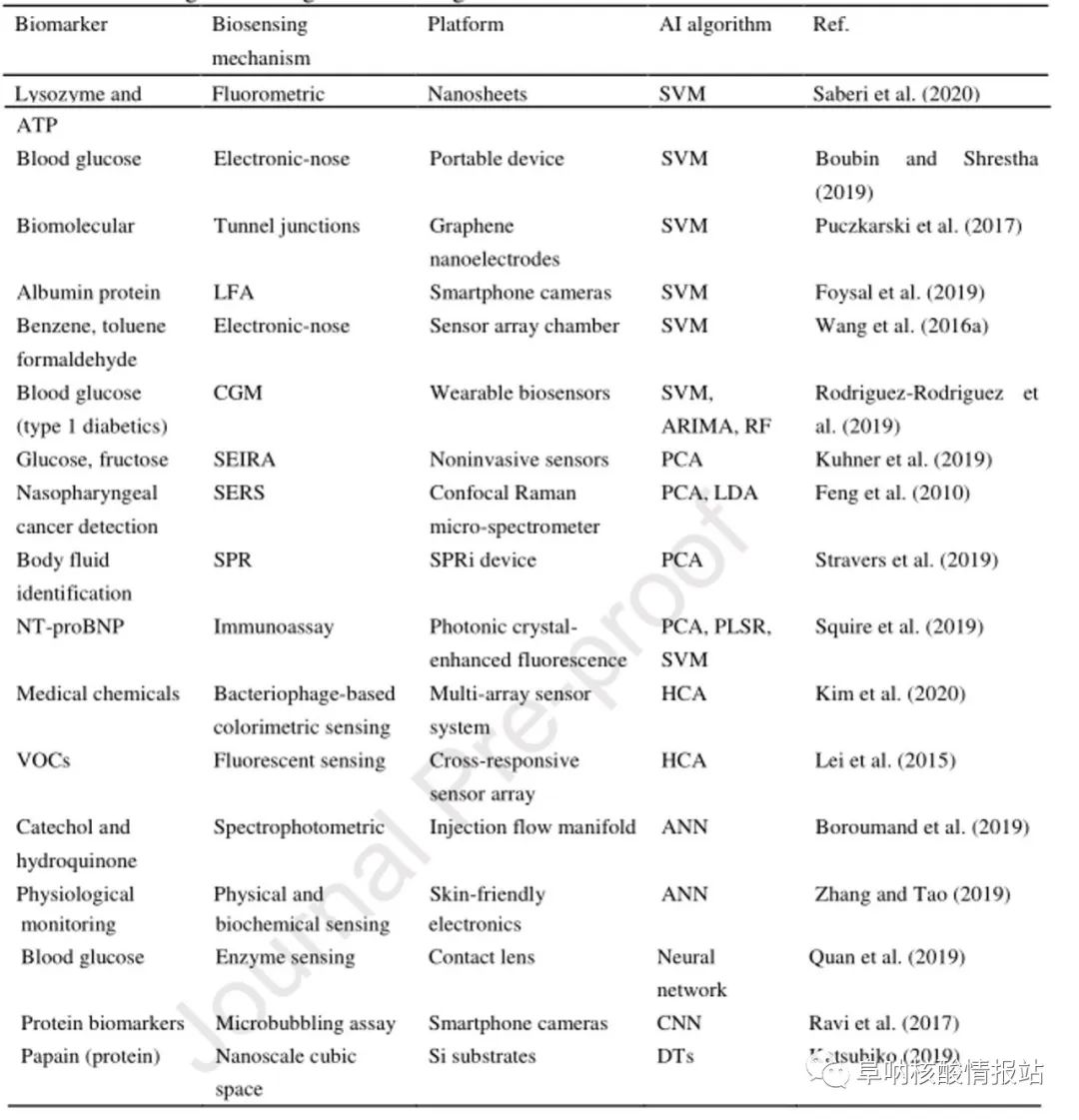
Artificial Intelligence (AI) and wearable sensors are two important fields for achieving optimal precision medicine tailored to individual patients. Combining these two fields can better capture patient data, improve the design of wearable sensors, and monitor the health of the wearer and their surrounding environment. Currently, with the Internet of Things, big data, and health moving from concept to implementation, AI biosensors with corresponding technical features face new opportunities and challenges.
Professor Xu Tailin and Professor Zhang Xueji from Shenzhen University reviewed the latest progress in key stages of future wearable and implantable technologies, from biosensing to wearable biosensors to AI biosensors. Undoubtedly, material innovation, biological recognition elements, signal acquisition and transmission, data processing, and intelligent decision-making systems are the most important parts. This article also discusses the challenges and opportunities for AI biosensors in the development of future medical devices.
According to application scenarios, sensors can be divided into physical sensors, chemical sensors, and biosensors. As the most important category, biosensors have undergone a long development process from classical electrochemical biosensors to wearable and implantable biosensors, finding wide applications in food safety, healthcare, disease diagnosis, environmental monitoring, and biosafety.
A biosensor is an instrument that is sensitive to biological substances and converts concentration into a detectable signal. According to the International Union of Pure and Applied Chemistry (IUPAC), a biosensor (Figure 1) is an integrated receptor-sensor device that provides selective quantitative or semi-quantitative analytical information about a specific analyte, which is symbolically represented by biological sensitive materials as the biological recognition element, physical or chemical sensor components, and signal transmission and amplification elements. Depending on the type of sensor unit, biosensors can be classified into bioelectrode sensors, semiconductor biosensors, thermal biosensors, optical biosensors, and piezoelectric crystal biosensors. Based on the type of recognition element, biosensors can be divided into enzyme sensors, nucleic acid sensors, microbial sensors, cell sensors, tissue sensors, and immunosensors. According to the type of recognition element, biosensors can be categorized into bioaffinity biosensors, metabolic biosensors, and catalytic biosensors.

This article highlights potential future AI biosensors (AI wearable sweat biosensors, AI edible biosensors, AI glass biosensors, AI implantable biosensors, etc.) and related advanced programming capabilities, including AI diagnostics, big data processing, and self-learning/self-adaptive. These AI biosensors are expected to achieve continuous monitoring of healthcare and cloud-connected point-of-care (POC) diagnostics by combining wireless biosensing technology with advanced machine learning algorithms.




Figure 4 Representative examples of AIBN include wearable AI biosensor networks, implantable AI biosensor networks, embedded AI biosensor networks, and environmental AI biosensor networks. This interface can notify users through wireless data communication between AI biosensors and smartphone-based platforms or other smart terminals. Big data processing in the cloud can be aggregated as needed.
Despite the increasing progress in the field of AI biosensors in recent years, there are still many key challenges before the commercialization maturity of AI biosensors in healthcare. First, flexible bioelectronic materials are a key factor for commercial applications; second, there are many limitations in current healthcare, including high costs, accuracy, and limited treatment methods. Therefore, there is a significant demand for improving existing medical facilities. This review demonstrates, through seamless system integration of AIBN technologies from the aforementioned five aspects, that AI biosensors will provide a new platform for future innovations and have the potential to transform nearly all aspects of healthcare.
Comments:
1.This article focuses on the relevant fields of flexible bioelectronic materials and integrated, wireless communication, machine learning, and smartphone-based AI biosensor development platforms. Thinning, miniaturization, integration, and low power consumption are the future development directions for medical AI biosensors.
2.This article emphasizes that biomarkers must bridge the gap between biophysical markers and biochemical markers to obtain a holistic model of individuals. There should be strong development of integrated chip technology, the Internet of Things, big data, and flexible electronic materials for AI to achieve self-learning, self-assembly, and self-adaptive capabilities in AI biosensor systems.
Statement:
1. The copyright of this article belongs to the original author. For reprints in public accounts and media, please contact us!
2. Due to limited knowledge, there may be omissions and errors; please feel free to criticize and correct!
3. This article mainly references the following literature, used for the introduction, commentary, or classroom teaching of related scientific research, and may not be used for commercial purposes. If there are any copyright issues, please feel free to contact us!
Xiaofeng Jin, Conghui Liu, Tailin Xu, Lei Su, Xueji Zhang, et al. Artificial intelligence biosensors: Challenges and prospects [J]. Biosensors and Bioelectronics, 2020.